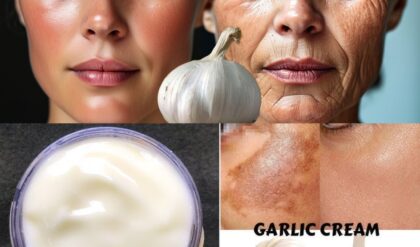Purslane, also known as Verdolaga, has shed its reputation as a mere garden nuisance to emerge as a prized superfood. Once overlooked, this resilient plant has found its way into farmer’s markets and high-end restaurants, celebrated for its remarkable health benefits and culinary versatility.

Often called hogweed or pigweed, purslane is a plant you’ll want to embrace, not eradicate. Renowned as a nutritional powerhouse, it has captured the hearts of figures like Mahatma Gandhi and is now experiencing a well-deserved revival.
Why Purslane Stands Out
This hardy plant can thrive in the harshest conditions, sprouting through cracks in sidewalks and flourishing in gardens. Dr. Artemis Simopoulos, president of the Centre for Genetics, Nutrition, and Health, described it as a “miracle plant” after discovering its exceptionally high levels of Omega-3 fatty acids—higher than any other green plant.
Purslane’s succulent, teardrop-shaped leaves are packed with antioxidants, vitamins, and minerals. They boast a refreshing, tangy lemon flavor with a peppery kick, making them a chef’s delight. Sergio Vitale, chef-owner of Aldo’s Ristorante Italiano, recalls growing up with purslane in southern Italy, where it was cherished for its unique taste and versatility.
Although purslane was once a staple in early American kitchens, even enjoyed by Martha Washington, it fell out of favor in the early 1900s. Today, farmers, foragers, and creative chefs are bringing it back into the spotlight.
When preparing wild purslane, ensure it is washed thoroughly to remove any pesticide residue. With its slightly tart and salty flavor, it’s a fantastic addition to salads, soups, and stir-fries.

A Simple Purslane Recipe to Try: Purslane and Basil Pesto
Ingredients
- 2 cups young purslane leaves and stems, rinsed and chopped
- 45g basil leaves, rinsed
- 1 clove garlic
- 45g toasted almonds
- Juice of half a lemon
- 50ml olive oil
- Salt and pepper to taste
Instructions
- Combine purslane, basil, garlic, almonds, and lemon juice in a food processor.
- Pulse until well blended.
- Slowly drizzle in olive oil while the processor is running until the mixture emulsifies.
- Season with salt and pepper.
Use this pesto as a spread, dip, or toss it with pasta for a vibrant, healthy dish.

The Nutritional Benefits of Purslane
- Rich in Omega-3 Fatty Acids
Purslane is an exceptional plant-based source of Omega-3s, essential for heart and brain health, especially for vegans. - Antioxidant Powerhouse
Packed with antioxidants like glutathione, it protects cells from damage, slows aging, and boosts overall health. - Loaded with Minerals
Purslane is rich in calcium, magnesium, potassium, and iron, making it an excellent addition to a nutrient-deficient diet. - Vitamin C Boost
This immune-enhancing vitamin is plentiful in purslane, helping to fortify your defenses against illnesses. - Beta-Carotene for Vision and Skin Health
As a precursor to vitamin A, beta-carotene helps maintain healthy vision, skin, and immune function. - Natural Source of Melatonin
Unlike most plants, purslane contains melatonin, a hormone critical for sleep regulation, offering a natural way to improve sleep quality. - Cholesterol Management
The betalain in purslane helps reduce LDL cholesterol levels and protects blood vessels, promoting heart health. - Mood Regulation with Tryptophan
Purslane contains tryptophan, an amino acid that supports serotonin production, helping to regulate mood and combat depression.
Embrace the Benefits of Purslane
Whether you’re drawn to its Omega-3 content, antioxidant benefits, or culinary appeal, purslane is a plant that deserves a place in your garden and on your plate. It offers not only a wealth of health advantages but also a refreshing taste that elevates any dish.
Share the wonders of purslane with friends and family, and explore this humble plant’s ability to enhance both well-being and flavor.





